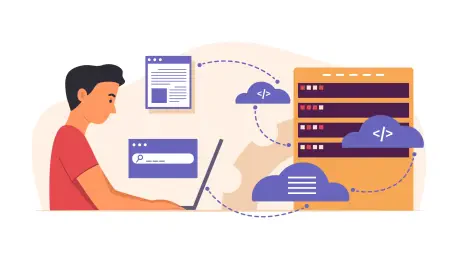In today’s fast-paced digital landscape, as organizations increasingly rely on Salesforce to power their critical business operations, the demand for robust DevOps practices continues to soar. As the complexity of applications grows, the need for efficient development and deployment processes becomes paramount. Key among these processes is observability, a crucial factor in enhancing DevOps success on Salesforce platforms. Observability transforms how IT teams handle errors, optimize performance, and ensure seamless user experiences, making it essential for navigating modern challenges. Gearset’s expansion of its DevOps platform for Salesforce epitomizes this shift, providing enhanced observability for applications developed using both low-code Flex and object-oriented Apex programming environments. These tools are fundamental for developers ranging from novice citizen developers leveraging low-code to seasoned professionals building complex solutions. As Salesforce applications evolve, Gearset’s advancements underscore observability’s growing importance, offering real-time insights and analytics pivotal for maintaining efficiency and reliability in development and deployment.
Impacts of Salesforce’s Diverse Development Landscape
Salesforce’s application ecosystem is characterized by its diverse development landscape. From citizen developers using low-code tools to professional developers harnessing powerful programming languages like Apex, the range of contributors to Salesforce apps spans a wide spectrum. This diversity enriches the platform but also brings varied levels of quality and complexity to the applications created. As development teams strive to meet the dynamic needs of business processes, they encounter unique challenges inherent to Salesforce’s multifaceted programming environment. Observability emerges as a key enabler, providing crucial visibility into application behavior across different development approaches. By incorporating observability, teams can rapidly identify and address discrepancies, leading to more consistent application performance. The rapid pace at which custom applications are developed necessitates specialized DevOps solutions tailored to Salesforce’s environment. These tools aid in managing the intricacies of development, ensuring smooth deployments, and mitigating risks associated with deploying diverse applications on Salesforce. Observability, therefore, is not merely a luxury but a necessity for optimizing the entire DevOps lifecycle.
The Role of Observability in DevOps Efficiency
Observability’s significance in DevOps efficiency manifests through its ability to offer real-time error analysis and insights, pivotal for modern software development on Salesforce. Gearset’s platform provides enhanced capabilities, doing away with reliance on automated error emails often inundated with context-lacking alerts, which overwhelm IT teams, inhibiting effective troubleshooting. This refined approach to error management empowers teams, allowing quick detection and resolution of issues, enhancing overall operational efficiency. Remarkably, a survey conducted by Gearset reveals that many IT teams have yet to adopt observability platforms. Despite the observable data spotlighting improved bug detection and resolution capabilities in teams using such tools, a notable percentage of teams remain disconnected from observability benefits. As organizations continue to integrate AI agents into Salesforce, the potential volume of interactions and subsequent issues soar, underlining the necessity for robust observability to prevent disruptions and ensure seamless user interactions. The consistent growth in adoption of observability tools signals an industry-wide recognition of its benefits, highlighting its pivotal role in driving efficient Salesforce DevOps practices.
The Path Forward for Salesforce Development Teams
In today’s rapidly evolving digital world, organizations increasingly depend on Salesforce for essential business operations, spiking the need for strong DevOps practices. As application complexity rises, streamlining development and deployment processes becomes crucial. A key component in this is observability, vital for boosting DevOps success on Salesforce platforms. It revolutionizes how IT teams tackle errors, enhance performance, and ensure smooth user experiences, making it indispensable for addressing today’s challenges. Gearset’s expansion of its DevOps platform for Salesforce exemplifies this transformation, offering improved observability for apps created with both low-code Flex and object-oriented Apex programming. These tools are essential for everyone from novice citizen developers using low-code to expert professionals crafting sophisticated solutions. As Salesforce apps advance, Gearset’s innovations highlight observability’s growing significance, offering real-time insights and analytics crucial for sustaining efficiency and reliability in development and deployment.









